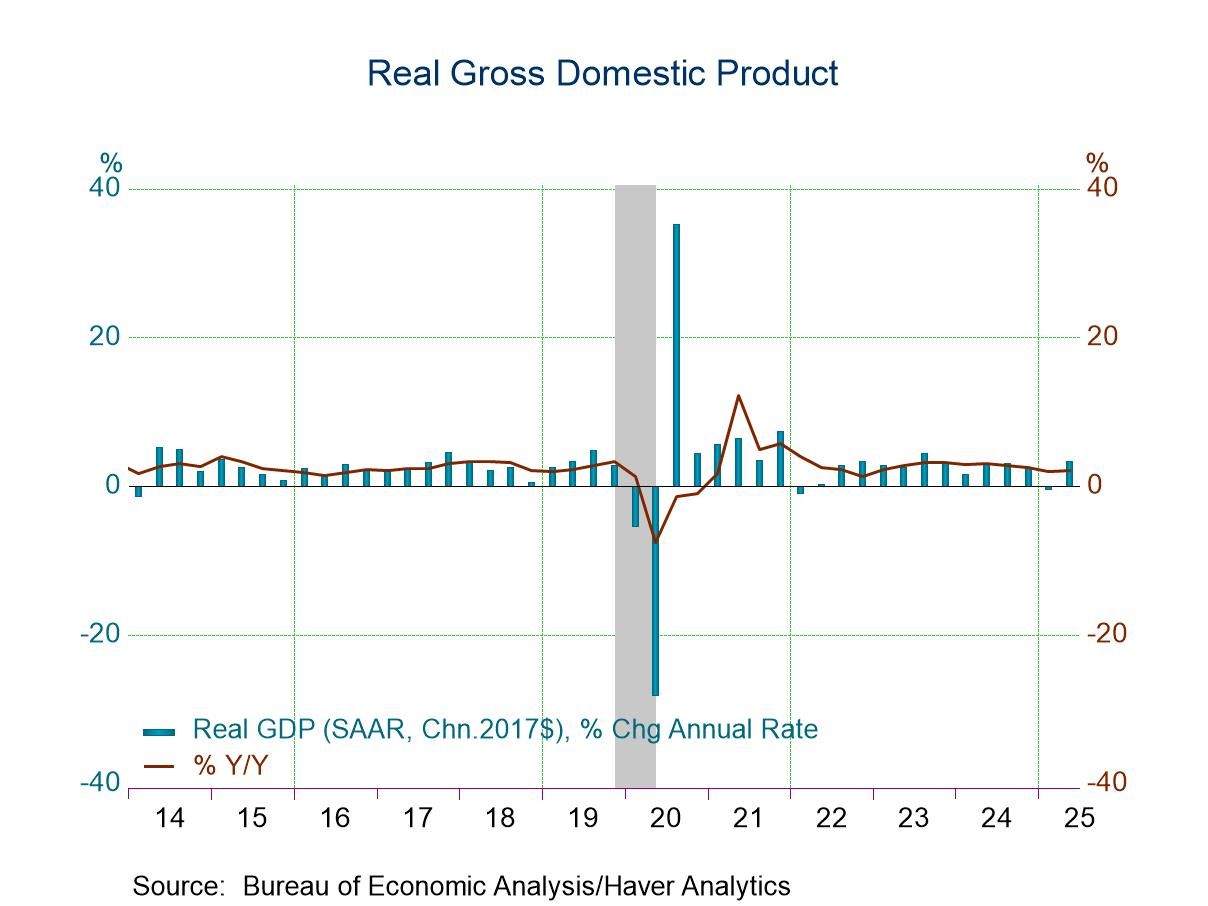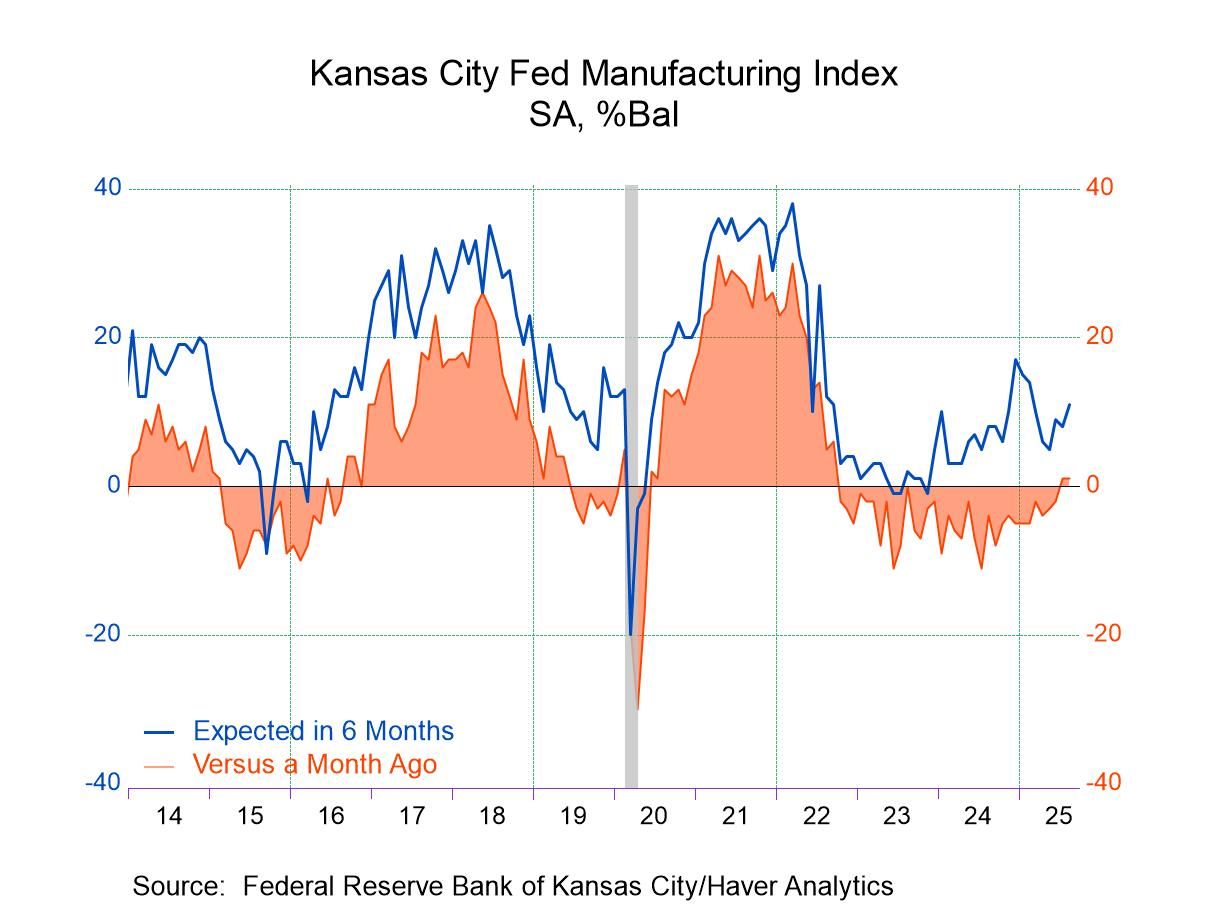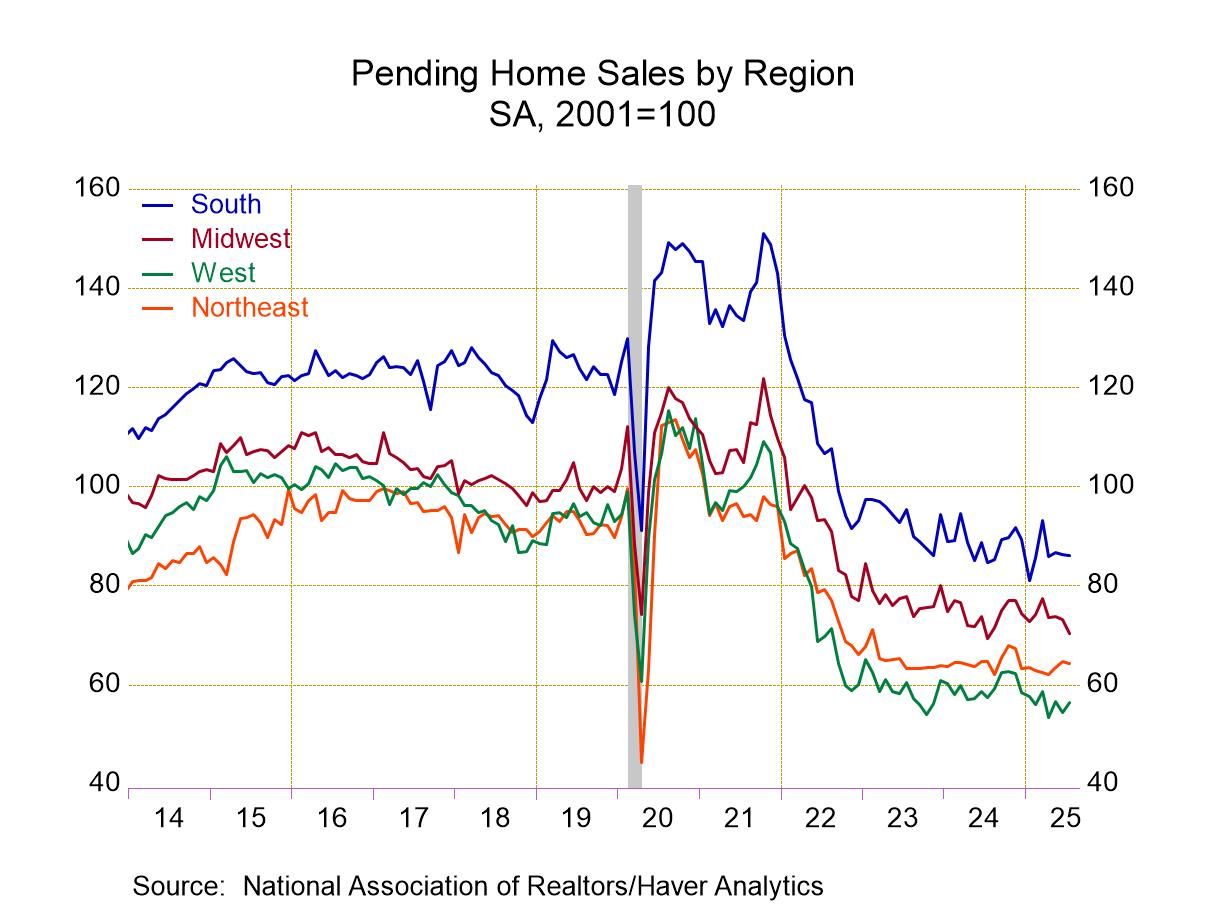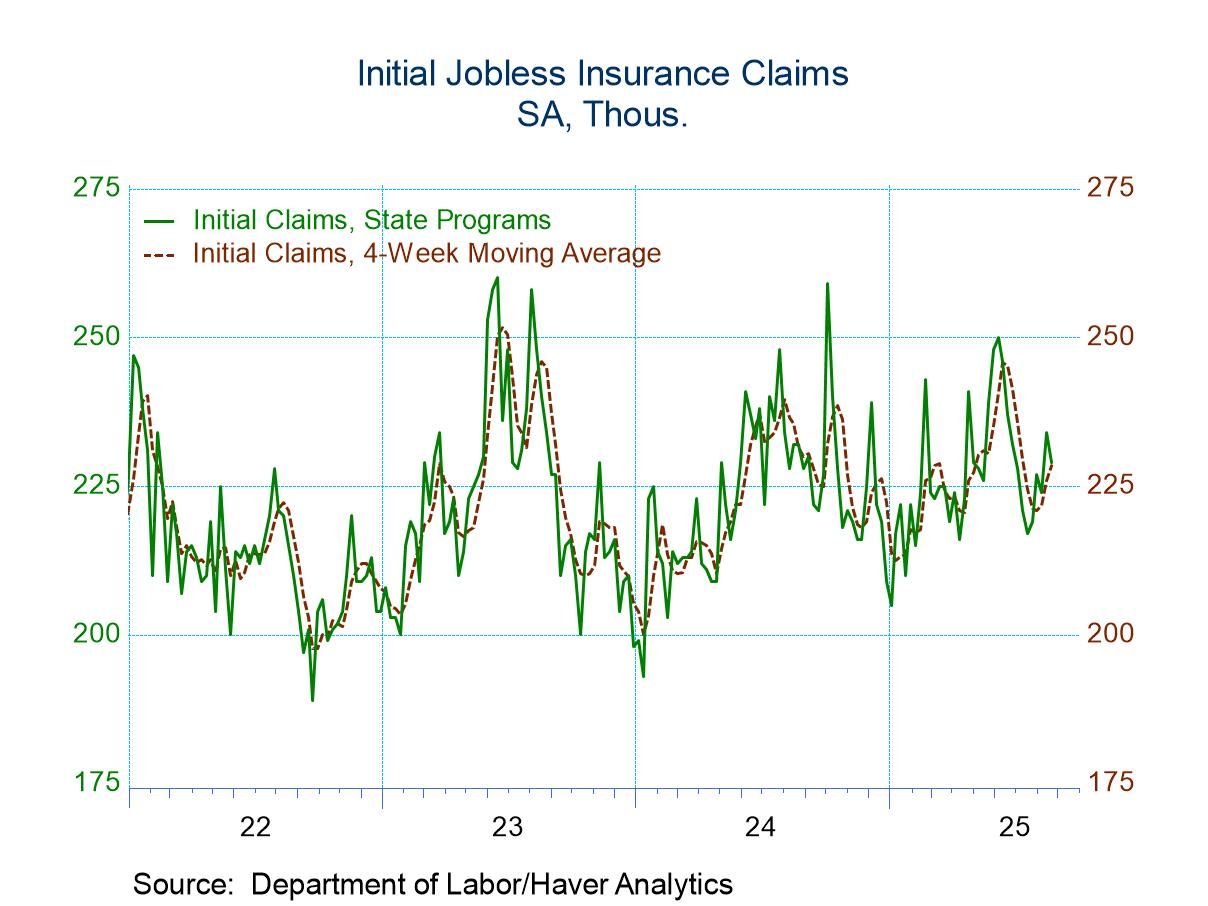 Global| Jul 08 2010
Global| Jul 08 2010German IP Jumps - But For Joy?
Summary
Higher! German Industrial production rose by 2.6% in May after a rise of 1.2% in April. The sequential annualized growth rates continue to ramp up. Yesterday, industrial orders fell and that may be a wake up call, since orders do [...]
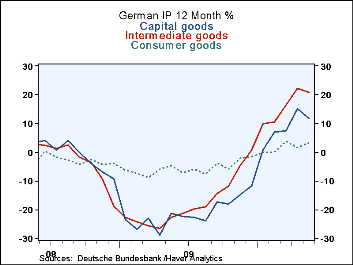 Higher! German Industrial production rose by 2.6% in May after a rise of 1.2% in April. The sequential annualized growth rates continue to ramp up. Yesterday, industrial orders fell and that may be a wake up call, since orders do lead. But as you can see in this table industrial orders continue to show accelerating sequential growth rates even after the drop in May that was recorded in yesterday's report. And orders growth rates continue to run slightly ahead of those for industrial output. Orders are still leading and they are still leading. Like 'Sly and Family Stone,' they want to take you higher.
Higher! German Industrial production rose by 2.6% in May after a rise of 1.2% in April. The sequential annualized growth rates continue to ramp up. Yesterday, industrial orders fell and that may be a wake up call, since orders do lead. But as you can see in this table industrial orders continue to show accelerating sequential growth rates even after the drop in May that was recorded in yesterday's report. And orders growth rates continue to run slightly ahead of those for industrial output. Orders are still leading and they are still leading. Like 'Sly and Family Stone,' they want to take you higher.
Boost for Germany in Q2 - Two months into the second quarter, IP is surging at a 25.9% annual rate over the Q1 base. Consumer goods output is up at a very meager 2.3% annual rate with capital goods output up at a 28% annual rate and intermediate goods output up at a soaring 37% annual rate.
More good-news signals - But to round out the picture of a still-improving-not just growing Germany-the German trade surplus shrank in May with imports up by 14.8% and exports up at by 9.2% month-to-month. This sort of growth suggests that the domestic German economy may be coming back to life as well.
Risks! Lions, Tigers, and Bears...Especially Bears --Certainly we have to be mindful of the banking sector fragility and government debt, and the new tilt to fiscal austerity (...if we get it). But there is also the trend for growth. Granted the growth 'trend' will not be able to swim upstream against such a negative current of growth-dulling events. But the question remains as to how much these things that get newspaper and wire-service front-play will actually impede growth or if growth itself has taken root and will diminish the negative impact of the very conditions every one fears so much. Which is the horse and which is the cart? All too often that determination depends on which financial writer or expounding-economist is the 'bear.'
Mixed trends and mixed up leaders -Germany is still Europe's shining star. Europe is still under a cloud and that star may not be enough to light up the continent. US growth has seemed more tepid. Japan's core machinery orders just reported a sharp drop in May. UK housing prices are backing off and UK IP was up mildly after a more sizeable monthly drop. So the world economy continues to spin out an uneven tale of sputtering growth complete with local melodrama. But that is the norm in recovery periods. The IMF has confused things today by adding to this mixed picture, hiking its growth forecast then warning that the risks to growth have been raised. I'm not quite sure what it thinks the message is behind such a convoluted shift or if it is just hedging its bets...
Markets spring a bear trap for now -At the still-recent G-20 summit Germany won the argument to push ahead with austerity. The US 'won' the footnote to not overdo restrictions so as not to jeopardize growth. The IMF's new forecast plays to both of those themes. We need to be careful in the coming months about jumping to conclusions about growth. Fortunately the US markets rebounded sharply, moving the DJIA away from its neck breaking threat in the feared head and shoulders chart formation. If the markets can continue to rise or at least move sideways this formation can be washed out. From the start it has been a good formation with poor volume signals to back the move. Finding that support has held and that the formation may wither is not really a surprise, except for the bears. For the near term that formation will be a threat for some time. Still, you have to be pretty pessimistic to think that markets are going to send a signal for a sizeable decline in stock markets from current levels. The slope of the yield curve in the bond market is not saying that. So beware the bear.
Strategy? Jack be nimble! -While there are still mixed global numbers I think the glass is still half-full and filling. In the case of Germany it is more than half-full and half-full of a good German brew. Apparently Ton Hoenig at the KC Fed and Richard Fisher at the Dallas Fed agree with the more up-beat view (if not with the part about the beer). Pessimists of the world repent. And, optimists, don't book your seats at the Oktoberfest just yet. The times are still a-changin'.
| Total German IP | |||||||
|---|---|---|---|---|---|---|---|
| SAAR-exept M/M | May-10 | April-10 | March-10 | 3Mo | 6Mo | 12Mo | Quarter- to-Date |
| IP Total | 2.6% | 1.2% | 3.7% | 34.1% | 15.6% | 12.4% | 25.9% |
| Consumer | 1.7% | -1.3% | 2.5% | 12.3% | 4.9% | 3.4% | 2.3% |
| Capital | 4.6% | 0.2% | 3.9% | 40.3% | 21.8% | 11.8% | 28.5% |
| Intermed | 3.2% | 2.8% | 3.5% | 45.6% | 20.4% | 20.9% | 37.6% |
| Memo | |||||||
| Construction | -2.3% | 2.5% | 24.5% | 141.4% | 9.8% | 4.4% | 108.9% |
| MGF IP | 3.4% | 1.1% | 3.5% | 37.2% | 17.8% | 13.6% | 27.3% |
| MGF Orders | -0.5% | 3.2% | 0.1% | 36.2% | 22.9% | 24.4% | 35.0% |
Robert Brusca
AuthorMore in Author Profile »Robert A. Brusca is Chief Economist of Fact and Opinion Economics, a consulting firm he founded in Manhattan. He has been an economist on Wall Street for over 25 years. He has visited central banking and large institutional clients in over 30 countries in his career as an economist. Mr. Brusca was a Divisional Research Chief at the Federal Reserve Bank of NY (Chief of the International Financial markets Division), a Fed Watcher at Irving Trust and Chief Economist at Nikko Securities International. He is widely quoted and appears in various media. Mr. Brusca holds an MA and Ph.D. in economics from Michigan State University and a BA in Economics from the University of Michigan. His research pursues his strong interests in non aligned policy economics as well as international economics. FAO Economics’ research targets investors to assist them in making better investment decisions in stocks, bonds and in a variety of international assets. The company does not manage money and has no conflicts in giving economic advice.



